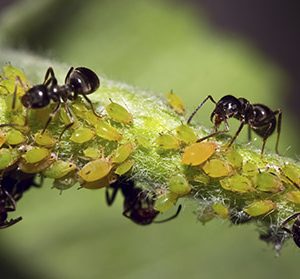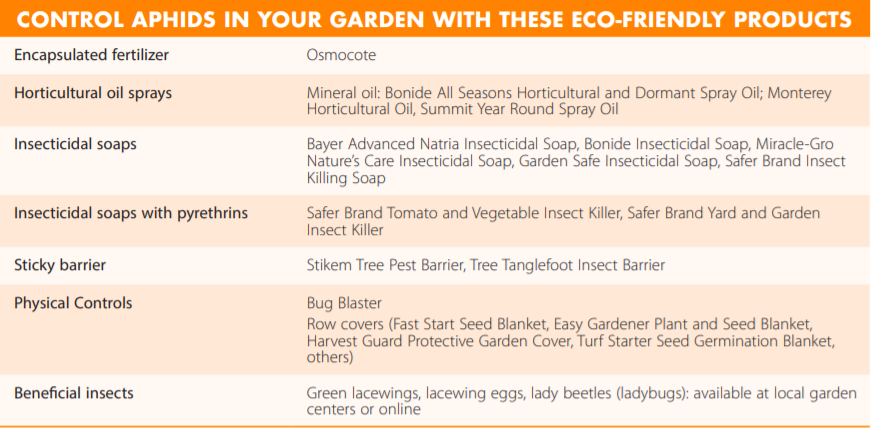
Learn how to control aphids in your garden with these tips from the City of Goleta Environmental Services Division.
Are those aphids on your plants?
Aphids are very small insects with soft, pear-shaped bodies, often found on young buds, stems, and the underside of leaves. If you look closely you’ll see that they have long legs and antennae. Some have wings. A large infestation can stunt plant growth or distort leaves and flowers.
Aphids aren’t all bad
A few aphids on your plants can actually make your garden healthier because they attract beneficial insects—good bugs that eat pests and pollinate your garden. Many helpful spiders and bugs (like ladybugs, green lacewings, and tiny non-stinging parasitoid wasps) will stay in your garden if there are aphids to eat. Aphid problems often start early in the spring. As the beneficial insects arrive and reproduce in your garden, the aphid population shrinks.
Controlling aphids
Aphids (and other plant pests including whiteflies and scale) produce a sweet, sticky substance called honeydew that attracts ants. Seeing a lot of ants on plant stems is a sure sign of a pest infestation. Since ants will actually protect honeydew-producers from natural predators, it’s important to keep ants away when you’re trying to get rid of aphids.
- Wipe off or prune away large numbers of aphids from leaves and buds.
- Use a strong stream of water to wash off both aphids and honeydew. Do this early in the day so that the plants will dry before hot sun hits and burns the leaves.
- Bring on the ladybugs! Purchase lady beetles (ladybugs) or green lacewings and release them onto your infested plants.
- If all else fails, spray with a horticultural oil spray to smother the aphids.

Find more information on controlling aphids with eco-friendly pesticide alternatives in our OWOW brochures in English and Spanish.
The City of Goleta along with the Cities of Buellton, Carpinteria, Solvang, Santa Barbara, Santa Maria and the County of Santa Barbara have partnered with the OWOW organization to promote the use of less-toxic products in an effort to reduce pesticide pollution in our communities. By reducing pesticide use and the use of less-toxic products around the home, you can help reduce pesticides and other pollutants such as herbicides and fertilizers from being picked up while watering or when it rains and transported to the nearest storm drain inlet and into our waterways. The OWOW website is user-friendly and a great resource for finding less-toxic products to use around your home or garden.


